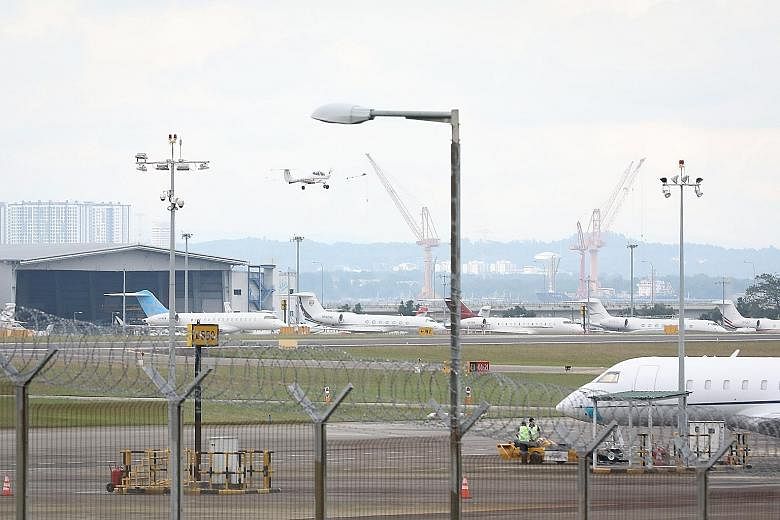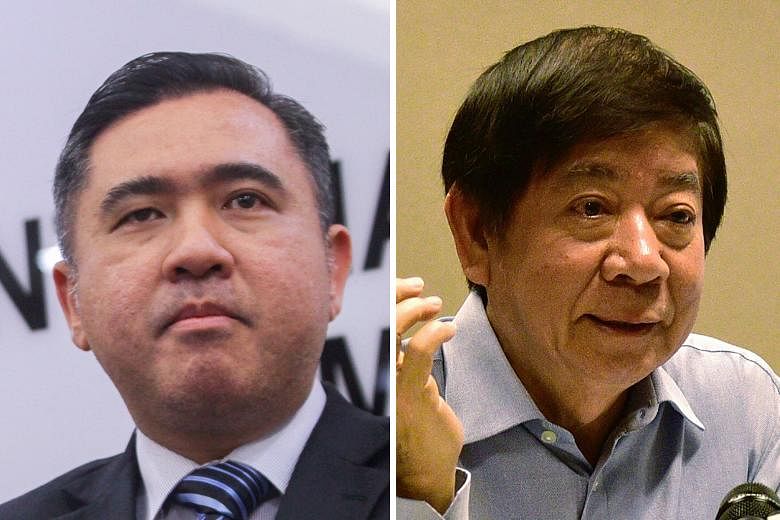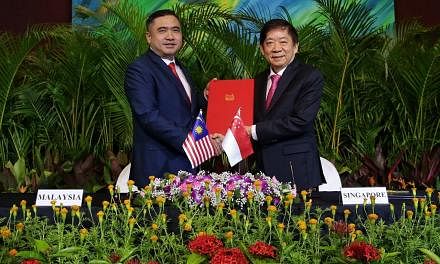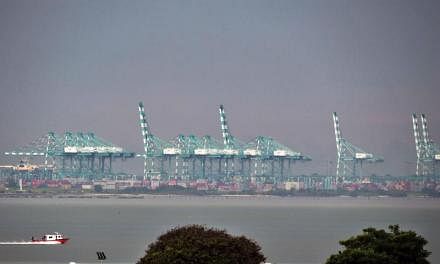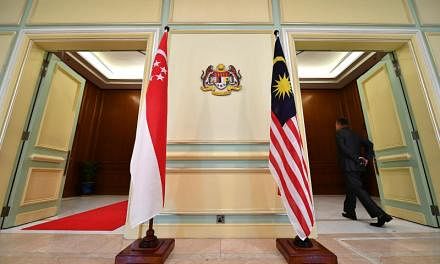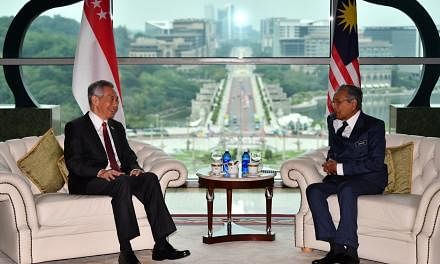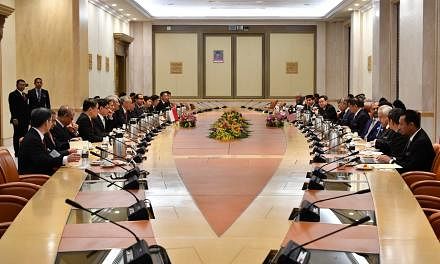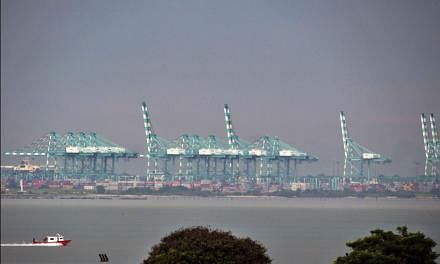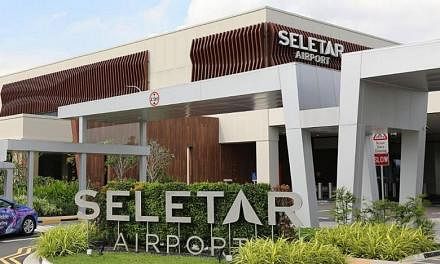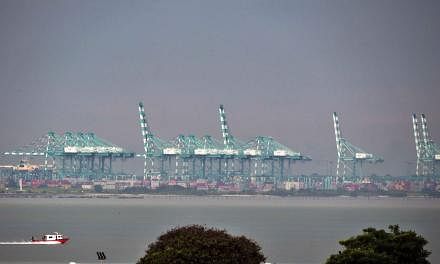1 How did the dispute burst into the open?
On Tuesday, the simmering disputes between Singapore and Malaysia over airspace and territorial waters spilled into the public arena following a statement by Malaysia's Transport Minister Anthony Loke.
He said Kuala Lumpur planned to take charge again of the managing of the airspace over south Johor, a task long delegated to Singapore.
The reason it gave was that it objected to new flight procedures Singapore had proposed for Seletar Airport, a change that involves new flight paths for pilots landing there, as "they will stunt development" around the Pasir Gudang industrial district.
But Mr Khaw argued that the airspace was delegated to Singapore's management under an agreement with regional states, including Malaysia, in 1973.
He also said the new flight procedures, called the Instrument Landing System (ILS), enable pilots to approach the airport and runway in a safer and more precise manner.
Hours after the disagreement came to light, Singapore published a statement saying it had lodged a strong protest with Kuala Lumpur on a separate issue: Malaysia's move to extend the Johor Baru port limits.
It said Malaysia made the decision on Oct 25, when it issued a federal government gazette declaring it would extend the Johor Baru port limits into waters that Singapore claims as its own.
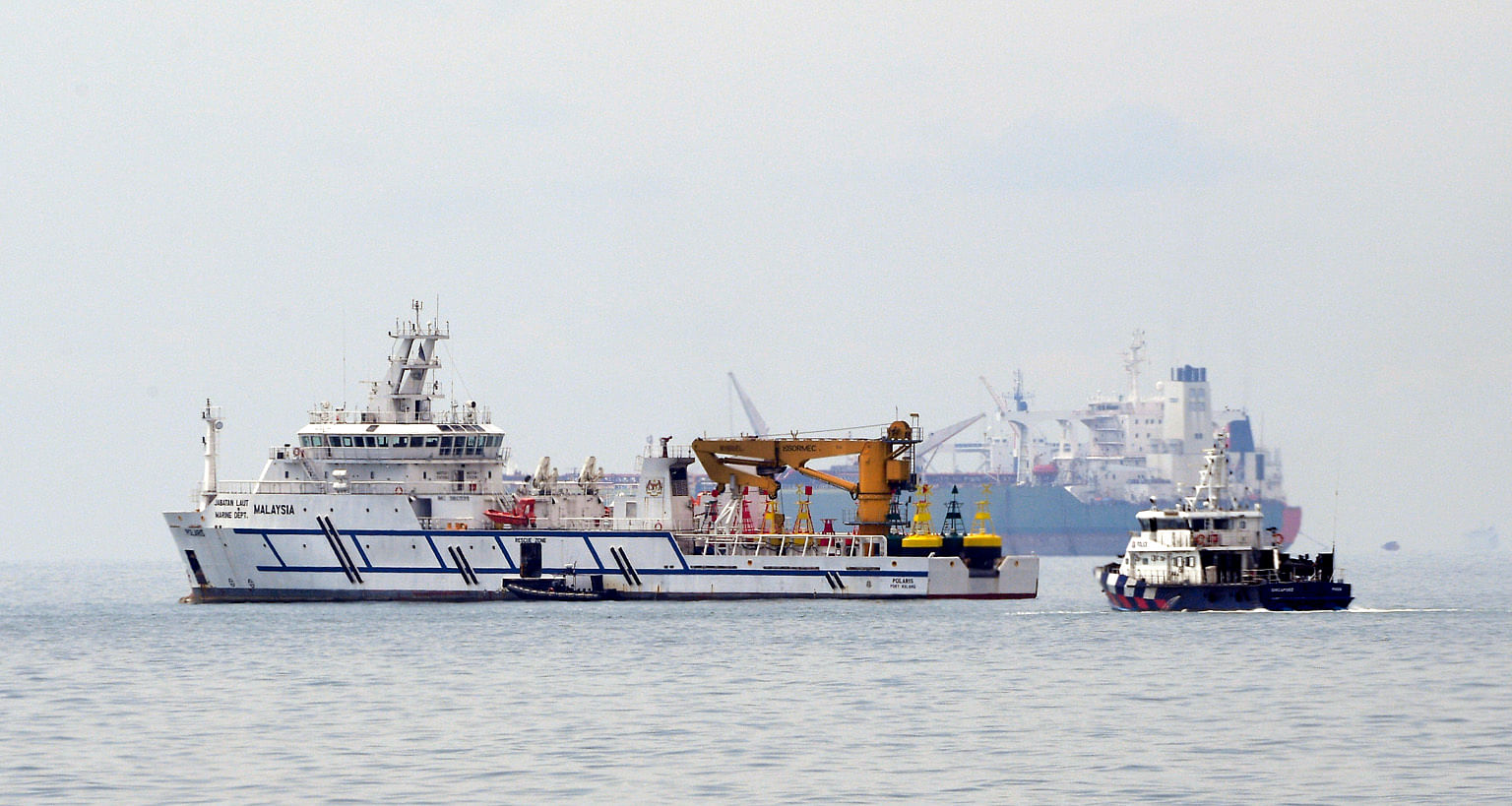
2 What is Singapore's response?
On Nov 5, Singapore issued a Third Person Note (TPN) requesting Malaysia to amend immediately the gazette to reflect Singapore's sovereignty over the waters.
On Nov 9, Mr Khaw raised the issue with Mr Loke when they met in Bangkok at an Asean aviation meeting.
Mr Khaw told reporters on Thursday that Prime Minister Lee Hsien Loong also flagged the issue with Malaysian Prime Minister Mahathir Mohamad last month as one that could affect bilateral relations. Tun Dr Mahathir was then in Singapore for the Asean Summit.
But on Nov 11, Malaysia issued a port circular, followed by a notice to mariners on Nov 22, to alert the shipping community of the expanded Johor Baru port limits.
Singapore issued a second TPN on Nov 29 to protest against these documents, and the next day published a circular instructing ship masters and owners of vessels to disregard Malaysia's notices.
Since then, Mr Khaw said, Malaysian government vessels have been continually intruding into Singapore's waters off Tuas.
There have hitherto been 14 intrusions, he said on Thursday, when he issued a firm statement on Malaysia's "blatant provocation".
A day earlier, Malaysia had issued a media statement saying it was well within its rights to draw any port limit in its area, in accordance with its national laws.
Malaysia also replied to Singapore's first TPN of Nov 5, saying the altered Johor Baru port limits did not encroach on Singapore's waters, and that the Malaysian government vessels were patrolling the territorial waters of Malaysia.
In reply, Singapore expanded its port limits with immediate effect from Thursday.
3 Does Singapore's land reclamation factor into the dispute?
In Wednesday's statement, Mr Loke suggested that the dispute over the waters off Tuas was due to land reclamation. "Singapore has in recent years carried out extensive land reclamation in the area in question," he said.
In accordance with international law, the territorial sea of Singapore remains unchanged, even when reclamation has been carried out almost to the outer limits of Singapore's territorial sea, he said.
However, Mr Khaw pointed out that when Malaysia published in 1979 a map of its maritime boundaries, it did not consult Singapore.
And Singapore has never accepted these claims.
"In fact, in 1979, no reclamation at Tuas had taken place," he added.
"So, the Malaysian unilateral territorial claim of 1979 (which we do not recognise) could not possibly have taken into account any reclamation by Singapore."
The new Johor Baru Port limits in fact go beyond Malaysia's own territorial claim line, and Malaysian ships have crossed this line to enter Singapore waters, Mr Khaw added.
4 What is the situation now?
Yesterday, there were still three Malaysian vessels in Singapore's waters, and security agencies continued to patrol the area and issue warnings to the vessels.
Malaysian Foreign Minister Saifuddin Abdullah called for both sides to cease and desist from sending ships into the disputed area from today.
Singapore replied to say that it did not agree, and called on Malaysian government vessels to cease these provocative violations of Singapore sovereignty and return to the status quo ante before Oct 25.
5 What is next?
In his statement, Datuk Saifuddin said Malaysia has forwarded to Singapore a draft agenda for a meeting aimed at an amicable resolution of the dispute.
He said the Malaysian government hopes for the meeting to be convened "sometime in the middle of this month".
Singapore said it would respond to Malaysia's note in due course, and remained ready to discuss the issue in a constructive manner in the spirit of preserving the important bilateral relationship.
SEE OPINION
Dangerous pushing of boundaries
Beware of 'grey zone' conflicts
FORUM
